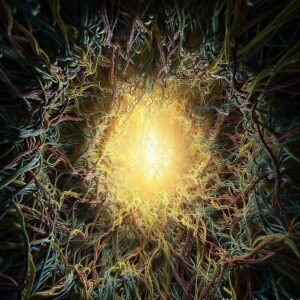Fearless Woman: Exploring Life Without a Fundamental Emotion.

Fearless Woman: Life Without Fear Explored
What if fear were absent? What if one could confront mortality without hesitation? This episode explores the life of a woman who defies conventional understanding, a woman seemingly devoid of fear. We will examine the nuances of her unique existence, her interactions with the world, and the impact of this emotional absence on her life and, potentially, on our own.
We will investigate the specific brain region responsible for this fundamental emotion and analyze how its absence can illuminate the nature of fear itself, its critical role in survival, and its influence on human relationships. SM’s story transcends a rare medical anomaly; it offers a profound insight into the essence of humanity.
Before we begin, we invite you to share your initial perspectives on life without fear in the comments section. Please subscribe to the channel to ensure you don’t miss the continuation of this extraordinary narrative.
The Woman Who Feels No Fear
Our exploration begins with SM, a woman living a seemingly ordinary life as a mother of three in a bustling city. However, beneath this routine lies a reality devoid of fear. SM’s condition is unique; a dysfunction in the amygdala, the brain region responsible for processing fear, has isolated her from this innate emotion. Imagine encountering a venomous snake without flinching. SM has literally done this, holding the snake while researchers observed with astonishment.
Furthermore, horror films, which typically evoke fear, elicit no response in SM. She finds them uninteresting and lacking in excitement. Even when confronted by an armed assailant, SM experienced no fear. Instead, she was curious about the weapon and attempted to engage the assailant in conversation. But what are the implications of living without fear? And how does this affect SM’s ability to perceive the world, particularly given her difficulty in recognizing fear in others’ expressions?
Urbach-Wiethe Disease and the Amygdala
SM’s exceptional state is a consequence of Urbach-Wiethe disease, a rare genetic disorder that significantly affects the brain, specifically the amygdala. The amygdala, a small almond-shaped structure deep within the brain, serves as the center for processing fear. For most individuals, this area functions as an early warning system, alerting us to potential danger. However, in SM’s case, Urbach-Wiethe disease has resulted in the accumulation of fatty substances in the amygdalae, leading to their complete impairment. This disease, described by Austrian scientists Urbach and Wiethe in 1929, remains incurable and affects various areas of the body, with its most significant impact on the brain.
As a result of this damage, SM’s amygdala is unable to process fear signals. While she understands fear as an abstract concept, she cannot experience it. Snakes, spiders, and even the threat of a weapon do not elicit a natural response. Research has also revealed a difficulty in recognizing fear in others’ facial expressions, further isolating her in a world filled with warning signals that she cannot interpret.
The Absence of Fear Conditioning
Fear conditioning, a fundamental aspect of survival, is the process of learning the critical association between stimuli, such as the sound of thunder or the sight of a snake, and imminent danger. This association is typically indelibly etched in our memory, thanks to the proper functioning of the amygdala, the guardian of our emotions. But what happens when this guardian is absent? In SM’s case, the damage to her amygdala has deprived her of this vital learning process. Numerous experiments have attempted to test her ability to acquire conditioned fear responses, using stimuli such as mild electric shocks paired with visual or auditory cues, but the results have consistently shown no discernible response. Furthermore, animals typically associated with innate fear, such as snakes and spiders, elicit only curiosity, not the expected panic. A study published in *Nature Neuroscience* in 2013 revealed an additional challenge: difficulty in interpreting fear in others’ facial expressions. An entire spectrum of implicit warning signals goes unnoticed. A classic horror film, designed to evoke our deepest fears, becomes, in her perception, merely an interesting narrative. Fear, for her, remains an abstract concept, an experience beyond her grasp.
The Double-Edged Sword of Fearlessness
What if the absence of fear were a benefit? In moments of extreme peril, where others might retreat, SM, lacking the perception of danger, approaches situations with curiosity rather than panic. However, this apparent fearlessness comes at a cost. Fear serves as an early warning system, protecting us from harm. Without this protective mechanism, SM is more vulnerable. She has experienced assaults, robberies, and life-threatening situations, lacking the instinct to flee or seek shelter. SM has even expressed a desire to experience fear, not the paralyzing terror, but the subtle apprehension that promotes caution, that prompts us to look both ways before crossing a street, that protects children from playing with fire. Fear, at its core, is a survival mechanism, a product of evolution.
However, the question remains: can this innate deficiency be compensated for? SM, possessing keen intelligence, has developed coping mechanisms. She has learned to recognize danger by observing subtle cues and interpreting body language. However, these are rational, logical strategies, not innate responses. They represent acquired knowledge, not felt emotion. And in moments of genuine confrontation, this distinction may determine survival.
Social Interactions and the Missing Compass
But what does it mean to live in a world where one inspires no fear in others? While SM experiences joy and sadness in detail, she remains challenged in social interactions. Imagine seeing faces frown and bodies tense, yet being unable to associate these signs with fear. In a poignant experiment, SM struggled to decipher the fear conveyed in others’ eyes, despite diligent efforts. The look that precedes disaster, the tremor that runs through the body, remain ambiguous signals, lost in her perception. This inability extends beyond facial expressions to encompass subtle social cues that rely on fear as a warning of danger or a sign of a latent threat. Over time, SM has developed unique compensatory strategies. She observes carefully, analyzes deeply, and infers cautiously. However, this is a conscious process, a demanding and continuous mental effort, not an automatic, innate response. And in situations requiring immediate action, this subtle difference may distinguish her from others and expose her to danger without her awareness. Fear is not merely a fleeting emotion; it is a vital social compass.
Fear as Protector and Moral Guide
Fear, the emotion we often seek to avoid, is, in reality, our loyal protector. It is a survival mechanism ingrained over millennia, a protective shield against the dangers that lurk at every turn. Imagine a world without fear, a world lacking the early warning system that prevents us from approaching the brink of disaster, compels us to flee from predators, or cautions us against touching a hot surface. In the absence of the amygdala, as in SM’s case, the world becomes a fundamentally different place. A 2018 University of Iowa study revealed that individuals with amygdala damage exhibit significant difficulty in interpreting fear in others’ facial expressions, hindering their ability to understand subtle social cues. However, fear extends beyond reactions to physical threats; it is also an essential component of social interactions. Fear of rejection, fear of prejudice, these profound emotions significantly influence our behavior and relationships, guiding our decisions to maintain our place in the social fabric. It is the underlying motive that discourages us from lying, cheating, or harming others. In contrast, SM lives in a world free from these social constraints, a world that may appear to some as a paradise of freedom, but is, in reality, fraught with danger. Ultimately, fear shapes our personality and guides our moral compass toward what is right.
Can the Brain Compensate?
However, the question persists: can the brain truly compensate? Can other areas assume the function of the missing amygdala? Studies on animals have offered a glimmer of hope, suggesting that the prefrontal cortex may be capable of assuming some of these functions after amygdala damage. And in rare human cases, some patients have developed remarkable compensatory mechanisms, relying more on subtle social and contextual cues to assess imminent risks. Dr. Justin Feinstein, who has dedicated a significant portion of his career to studying SM, sees potential in training patients to recognize danger by repeatedly exposing them to frightening stimuli. A promising study conducted at the University of Iowa in 2013 revealed that some patients with amygdala damage were able to learn conditioned fear through alternative neural pathways, even without conscious recollection. Cognitive behavioral therapy, often used to regulate emotional responses in anxiety patients, may play a similar role in assisting individuals with amygdala damage. A case study of another patient, named BJ, revealed that while he had difficulty recognizing fear in facial expressions, he was able to process other emotional information. Even transcranial magnetic stimulation, which temporarily disrupts amygdala activity, provides insights into how the brain functions in the absence of this vital structure. Perhaps, the hope lies in discovering new methods to repair this missing circuit, or at least, identifying alternative pathways to overcome the absence of fear and restore the ability to feel safe.
Conclusion
SM’s case provides a unique perspective into the depths of the human psyche. It










